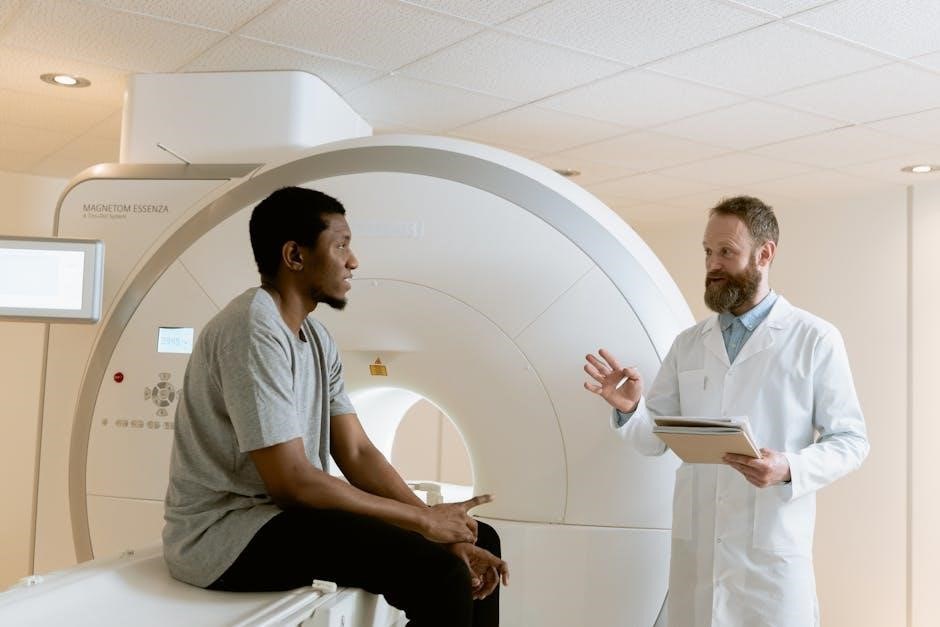Guided questions are structured inquiries that direct thinking and exploration, similar to refined search queries, helping learners focus and uncover relevant insights systematically.
Definition and Purpose of Guided Questions
Guided questions are carefully crafted inquiries designed to direct thinking, exploration, and problem-solving. They serve as tools to focus learners on specific objectives, encouraging deeper understanding and critical analysis. Unlike open-ended questions, guided questions are structured to elicit targeted responses, helping individuals navigate complex topics systematically. Their purpose is to stimulate engagement, clarify concepts, and ensure learners stay aligned with learning goals. By framing questions with precision, guided questions help individuals uncover relevant insights, analyze information, and apply knowledge effectively. They are essential in education, professional development, and research, fostering a systematic approach to inquiry and problem-solving.

The Importance of Guided Questions in Learning and Problem-Solving
Guided questions enhance focus, engagement, and critical thinking, directing learners to explore concepts deeply and solve problems systematically, ensuring alignement with learning objectives and fostering meaningful insights.
Why Guided Questions are Essential for Critical Thinking
Guided questions are indispensable for fostering critical thinking by encouraging deeper analysis and exploration of complex topics. They prompt learners to evaluate information, challenge assumptions, and consider multiple perspectives, similar to how refined search queries help uncover relevant insights. By focusing on specific aspects of a problem, guided questions enable systematic investigation, much like targeted search terms enhance the precision of information retrieval. They also promote active engagement, encouraging individuals to think independently and articulate their reasoning. This structured approach helps identify biases, clarify concepts, and refine problem-solving strategies, ultimately aligning with learning objectives and fostering meaningful understanding.

Constructing Effective Guided Questions
Effective guided questions require clear objectives and focused keywords, similar to refining search queries. They encourage deeper analysis and critical thinking by addressing specific aspects of a topic.
Key Characteristics of Well-Structured Guided Questions
Well-structured guided questions are clear, specific, and relevant to the topic, ensuring focused exploration. They often begin with action verbs like “analyze” or “explain” to guide the thinker. These questions are open-ended but not overly broad, striking a balance between direction and freedom. They encourage critical thinking by addressing multiple perspectives or requiring evidence-based responses. Effective questions also align with learning objectives, ensuring relevance and purpose. The use of precise language avoids ambiguity, while flexibility allows for diverse interpretations. By incorporating these characteristics, guided questions promote deeper understanding and engagement, much like how refined search queries yield targeted results in information retrieval.
Examples of Guided Questions Across Different Contexts
Guided questions are applied in education, business, and research. For example, students might analyze historical events, managers might identify market opportunities, and researchers might evaluate data trends.
Examples in Education, Business, and Research
In education, guided questions help students focus their research and critical thinking, such as analyzing historical events or understanding scientific concepts. In business, managers use them to identify market opportunities or evaluate customer feedback. For instance, a question like, “What trends are shaping our industry?” encourages strategic planning. In research, guided questions enable scientists to narrow their investigations, such as, “How does climate change impact biodiversity?” These structured inquiries ensure clarity and relevance, making them invaluable across diverse contexts. By tailoring questions to specific goals, individuals in education, business, and research can extract meaningful insights and drive decision-making effectively.

The Process of Developing Guided Questions
The process involves refining keywords, defining objectives, and structuring inquiries to guide exploration. It requires clarity, precision, and alignment with desired outcomes to ensure effectiveness.
From Identifying Objectives to Articulating Outcomes
Developing guided questions begins with identifying clear objectives and key concepts. Define what needs to be explored and align questions with desired outcomes. Use techniques like brainstorming or mind mapping to outline potential areas of inquiry. Next, structure questions to guide logical progression, ensuring they build on prior knowledge. Consider the audience’s understanding level and tailor questions accordingly; Incorporate advanced search techniques, such as using AND/OR operators, to refine focus. Finally, articulate outcomes by linking questions to measurable goals. This systematic approach ensures questions are purposeful, clear, and aligned with learning or problem-solving aims. Regularly test and refine questions to maximize their effectiveness in guiding meaningful exploration and achieving intended results.

Common Mistakes to Avoid When Creating Guided Questions
Avoid making questions too broad or vague, as they can confuse learners. Ensure clarity and specificity, focusing on measurable outcomes. Avoid leading questions or bias.
Pitfalls in Question Design and How to Overcome Them
One common pitfall in designing guided questions is making them too broad or vague, which can lead to confusion. To avoid this, ensure questions are specific and focused. Another issue is creating leading questions that guide learners toward a predetermined answer, limiting critical thinking. Additionally, questions that are not aligned with learning objectives can hinder effectiveness. To overcome these challenges, use clear and concise language, avoid bias, and test questions with a small group before widespread use. Incorporating feedback can refine question design, ensuring they effectively guide learners toward intended outcomes while fostering independent thought.
Best Practices for Implementing Guided Questions
Use clear and specific language, align questions with learning objectives, encourage critical thinking, and incorporate feedback to refine questioning techniques and enhance engagement.
Strategies for Effective Questioning Techniques
To enhance engagement and understanding, employ strategies like encouraging critical thinking, promoting active participation, and using open-ended questions. Incorporate feedback mechanisms to refine questioning techniques and tailor them to diverse learning needs. Utilize Socratic questioning to stimulate deeper reflection and problem-solving. Encourage learners to articulate their thoughts clearly and support collaborative discussions. Integrate think-pair-share activities to foster peer interaction and confidence. Use questioning to connect new information with prior knowledge, ensuring relevance and context. Regularly assess the effectiveness of questions and adjust them based on learner responses and outcomes. By aligning questions with learning objectives and maintaining clarity, educators can create a more interactive and meaningful learning environment. Examples include brainstorming sessions and case studies to apply theoretical concepts practically.
Guided questions play a pivotal role in fostering engagement and understanding by directing learners toward meaningful exploration and reflection; By encouraging critical thinking and active participation, these questions help bridge gaps between concepts and real-world applications. They enable learners to clarify ideas, challenge assumptions, and construct knowledge systematically. Effective use of guided questions promotes deeper understanding, enhances problem-solving skills, and cultivates a culture of inquiry. In educational and professional settings, they serve as powerful tools to engage audiences, stimulate creativity, and drive meaningful outcomes. Ultimately, guided questions are indispensable for fostering intellectual growth and preparing individuals to navigate complex challenges with confidence and clarity.













































